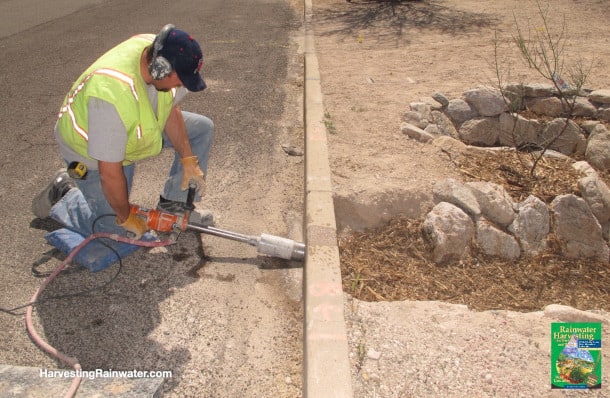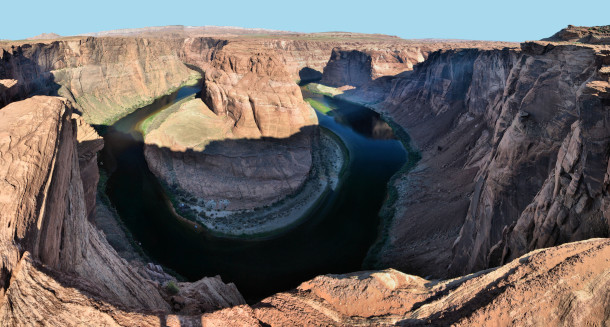Photo: The city of Tucson, Arizona, imports the majority of its water from the drought-stricken Colorado River, via the 336 mile long Central Arizona Project Canal. (Photo: John Morton, Flickr, CC BY 2.0)
Thirty years ago, a neighborhood group in Tucson started harvesting local rainwater by directing runoff into street-side basins filled with native, food-bearing plants. Co-founder Brad Lancaster joined Living on Earth’s Bobby Bascomb to tell how “planting the rain” improves neighborhoods, builds climate resilience, and helps the desert bloom.
Transcript
CURWOOD: Climate disruption is the main culprit for the blistering megadrought that has plagued the southwest US for decades, though this year winter snows helped encourage water negotiators in Arizona, California, and Nevada. Those states were able to agree to reduce their use of the Colorado River by three million acre-feet of water over the next three years, with the help of some federal money, but at best it’s a temporary solution. One of the biggest customers of Colorado River water is Tucson, Arizona, which taps the 336-mile-long Central Arizona Project Canal. Rainfall dumps roughly a million gallons per mile per year on Tucson’s residential
streets, and most simply goes down storm drains. But a precious portion of this renewable resource stays behind. Thirty years ago, the Dunbar Spring Neighborhood Foresters Organization started harvesting local rainwater by directing runoff into side-street basins filled with native, food-bearing plants. Brad Lancaster, co-founder of the organization, joined Living on Earth’s Bobby Bascomb to tell how “planting the rain” improves neighborhoods, builds climate resilience, and helps the desert bloom.
BASCOMB: So, paint a picture of Dunbar Spring for us. What does it look like today?

LANCASTER: Well, today, the majority of our streets are lined with native food-bearing trees and understory plants. So, you get to walk through these wonderful tunnels of edible shade. And we’ve got over two dozen native bird species that have returned to our neighborhood since we’ve regrown their habitat, that sing to you as you walk along. We have bicycle boulevards going through our neighborhood, which used to be speeding streets, and lots more families than there used to be. And even goats.
BASCOMB: Goats! Tell me more about the goats.
LANCASTER: So we’ve got some goats, we take them on walks once a day.
BASCOMB: Oh, my god. That sounds adorable.
LANCASTER: Well, and they’re great, too, in that they help us prune the pathways from knee-level down. And they’re kind of unofficial mascots of some of our efforts.
BASCOMB: Oh, my gosh, I love it so much. And I understand that this is not what it looked like, you know, just 30 years ago. What did you start with? And how did you even get started on a project like this?
LANCASTER: Yeah, so my brother and I moved to the neighborhood in 1994. Wonderful neighborhood, extremely diverse, but the public rights of ways, the streetscapes, were for the most part solar oven-like experiences. There was very few street trees, and we’re the third fastest-rising temperatures of any city in the US. So, you didn’t really want to be out and about where you might interact with a neighbor in the hot months. And what got us wanting to shift all that is when we moved to the neighborhood, the neighbors were being facilitated by a local architect to see, what did the neighborhood want? So, people wanted […]
Full article: loe.org

